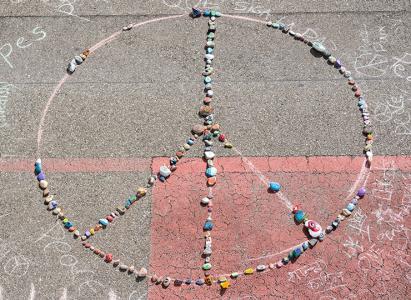The Charter of the United Nations and the Statute of the International Court of Justice were adopted on the 25th of June 1945 at the San Francisco Opera House, and were signed the next day at the Herbst Theatre auditorium. After the failure of the League of Nations to prevent a second world war, the United Nations set out to review its statutes and processes so that World War Three might never occur.
The United Nations frequently comes under criticism for being ineffective and politicised. Some argue that the Declaration of Human Rights is actually an Enlightenment-styled Western document rather than a genuinely global and inclusive treatise, that there is no clear mechanism for the operationalisation of the rights, and that the Sustainable Development Goals are non-binding, underfunded and too vague.
And yet, it has now been 78 years since WW2, referred to as “the long peace”, second only to the 200 year Pax Romana in terms of world peace historically. This is not to say that the world has not been marred by war since World War 2: it has, and continues to be, the single most devastating war being the Congo conflict in which more than 5 million people have died. Nonetheless, since 1945, we have been mercifully spared the horrors of wars like WW1 and WW2 where at least 20 million and 40 million people lost their lives.
The Sustainable Development Goals, another United Nations framework, are a powerful rallying cry for us to change our way of living for a better world.
Arguments can be made against these, but where will that take us? How can cursing the darkness rather than lighting a candle bring anything good?
The truth is that the United Nations and their affiliated organisations have been essential in working with governments and agencies across the planet to mitigate conflict, bring peace to the world and protect our planet. There is still much to be done, but the path has been set and more and more energy is going into making this vision a palpable reality.
Rather than pointing out the shortcomings of these initiatives, the more we come together around the global goals and unite for Human Rights, the more momentum will be created. Perhaps the best course is not to stand on the sidelines and point out that large institutions could be doing more, but on the contrary, to actively adopt their statutes and integrate that global vision into our work at a grassroots level.
This is why the International School of Geneva works so closely with UNESCO’s International Bureau of Education, scaffolding seven global competences that we work towards in educating our students; this is why sustainability is one of our core goals and our reference to the sustainable development goals is frequent. If more schools, universities and institutions in the private and state sector abide by these principles and adopt them, the more ground will be covered and the closer we will get as a planet to the goals set for 2030.
Peace and sustainability can only be achieved through federations, alliances, partnerships and unity. Some concessions have to be made to achieve this: it requires agreeing to systems and processes that might not be perfect, but it is a way through the darkness to the light, and we should take it. Remaining siloed in national systems and inward-looking sectoral boroughs will simply keep us refracted, divided and weak. To be strong, to be transformative, to face the challenges of today, which are intertwined and global, the approach should be global.
Which is not to say that actions should not be local: they have to be, it is the reference system that must be broader, so that many can act together within it.
For educational institutions, the Transforming Education Summit and Reimagining Our Futures Together statements consolidate what institutions across the globe need to do together to not only improve education and make it more accessible, but to ensure that learning outcomes are mapped against planetary necessities, so that our ultimate goal is not just individual good, but public good too and, at a global level, collective good.
The language of peace is written in many different concepts and cultural designs: Ubuntu, Umoja, Teranga, Ahimsa, Lagom, Kaitiakitanga to mention just a few. These are beautiful words and designate the path of peace, wisdom and sustainability within rich cultural frameworks. They do not stand in opposition to the idea of world peace, they are part of what world peace means: the language of world peace can only address the challenges the world faces if it is understood by many, and this is why the work of the United Nations is so essential, may we support it.
Conrad Hughes
Director General
Student League of Nations Address
United Nations, Geneva, the 5th of December 2023
